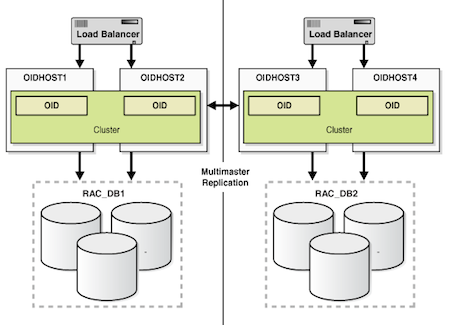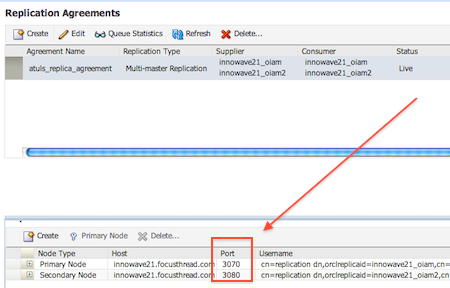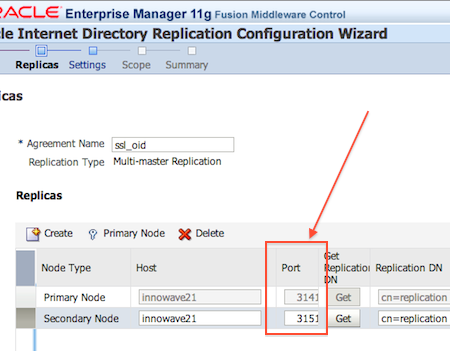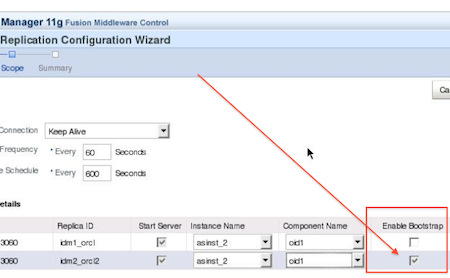Leave a Comment:
7 comments
[…] byAtul Kumar in oid I discussed about OID multi-master replication (LDAP based) in OID 11g here , In this post I am going to answer some of the question about OID replication that an OID […]
ReplyHi Atul,
Will this work for cross domain as well ?
I mean I have two OID in different domain, can I use Multi Master Replica or DIP Sync to synchronize ?
Any Specific env/confg req at both end ?
Help Appreciated
Reply@ IgnotedMind,
When you say cross domain here you mean different enterprise domain or network (and does not mean WebLogic Domain)
Yes this will work cross domain as long as two OID’s can talk to each other over LDAP (OID listener port)
Nothing specific requirement as long as each OID is in different Database and OID listener (LDAP) port is open across two domains where OIDs are deployed.
ReplyHi atul
I want to connect oracle db via ldap.I have installed oraclercu,weblogic,oracle identity manage.I created users and roles in OID.But now im stuck and i am not understanding how should connect my oracle db with ldap.I enter the credential like cn=users,dc=com and enter the host where my OID error is running and port number 3131 and 3160 but nothing is working for me .I also made changes in ldap.ora file but nothing seems to be working for me.
Replyabhi said, in August 7th, 2013 at 3:02 am
Hi atul
I want to connect oracle db via ldap.I have installed oraclercu,weblogic,oracle identity manage.I created users and roles in OID.But now im stuck and i am not understanding how should connect my oracle db with ldap.I enter the credential like cn=users,dc=com and enter the host where my OID is running and port number 3131 and 3160 but nothing is working for me .I also made changes in ldap.ora file but nothing seems to be working for me.
ReplyHi
How can we achive below
Master site with HA – read/write capability
Secondary sites will read only replica
=======================================
As with OID we have external Oracle Database which can be RAC for OID providing HA on Primary site. How can we achive same with OUD [BrkDb] in Primary site.
+ Read only replica on Secondary site.
Thanks
Vijay Kumar
Can you explain in details about “enable bootstrap” options when setting replication agreement.
If I check it on server oid2, so oid1 will gain all data from server oid1 or in reverse, oid1 will be the reception.




